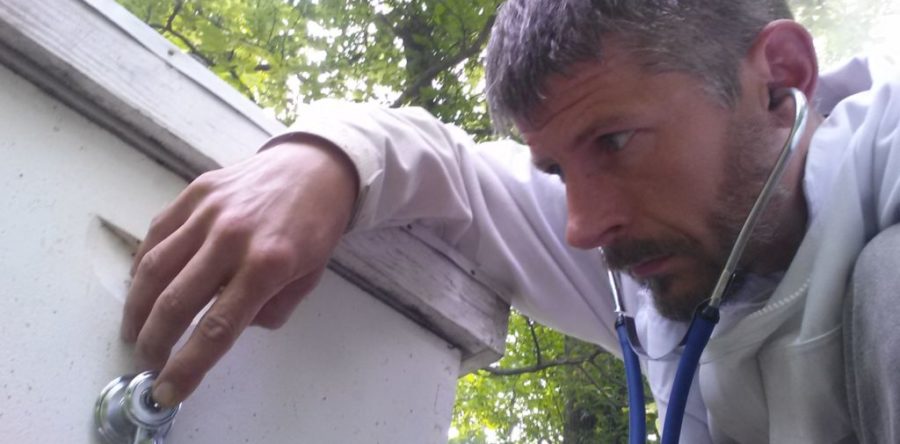Submitted by J. Morgan
I helped my dad with bees for a small period of time in the 80's... when I was a teenager, and I even had a hive of my own. I don't really count this as much experience but it was enough to make me want to pick it back up in 2009. Since then, I've never experienced my own deadout until this winter (2012-2013). One might suggest beginners luck, but I submit that from delving in, and getting as many mentor experiences as possible, along with doing a lot of reading, and writing about bees, I hit the ground running. It's significant to note that I was also miticide-free and doing as much "natural" beekeeping as possible. I did feed sugar as needed up until this last season... when I decided that I was going to let the bees fend for themselves. Whether or not this contributed to my deadouts is still undecided, as you will see.
On the last warm day, it was apparent to me that I lost several hives as only one hive had bees out flying. So, I cracked in to them to find what I expected... the sad sight that all beekeepers will eventually experience. All the bees, frozen in time... with the queen right there in the center... in each hive. There was still plenty of honey left to eat too, so what happened?
Here is a serious learning opportunity for any beekeeper. One must rise above discouragement, take the lumps and do a little detective work to find out what went wrong. At last hive check (before winter) I had concerns about a number of my hives. Particularly, the populations just weren't there. We like to see queens laying eggs later into the season and a good amount of bees when were taking supers off and preparing for winterization. Several of my hives just didn't have that. I think I was maybe short on a good pollen supply too. We like to know that weve been proactive in dealing with SHB (small hive beetle) and varroa but I was battling SHB in all my hives in one yard. However, at another yard, one hive whose populations were great, and had no beetles also became one of my deadouts! This is the video that follows.
I recorded this deadout because it's tough to see the cause of this one. It wasn't starvation, it wasn't moisture/wet bees... I didn't suspect varroa (but this was the cause, as you'll see) There is another hive right next to this one doing fine.
I run screen bottoms on all my hives and have since 2009. Haven't lost any hives until now, so I don't think having these screens wide open was a contributor. I thought I was OK on keeping varroa under control but still didn't rule it out. I'm sure there are mites in all my hives, but nothing suggesting the populations were enough to overrun. There looked to be traces of guanine on a few cell ceilings. We dusted probably 5 times over last season, once every 1-2 weeks apart and stopped to allow them to work on their winter cluster.
Since we don't know everything about CCD yet, I tend to research all I can before settling on this still-mysterious problem. The latest research on CCD suggests there is the presence of a virus and a disease. The presence of both means their doom. Here is SE Indiana, most of us don't move our hives to provide pollination services and our bees forage on much of the same stuff. We generally do what we can to keep the bees happy and healthy. Sure, we know there are pesticides used in our foraging areas, and since I can't test for virii or diseases, I'm sending samples to the Beltsville Bee Lab and will update back when I get results.
Take a look over this hive with me.
UPDATE 3-1-13: The results came back and it was varroa. No trace of nosema nor tracheal mites. Varroa was 10.5 per 100 bees! Proof that varroa can take them out right under your eyes!
UPDATE 4-12-13: Take a look at the alcohol washes I'm doing now to test deadouts for varroa.
Here's a great read from Randy Oliver with advice for new beekeepers and dealing with the obstacles of beekeeping.




0 Responses